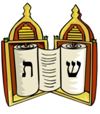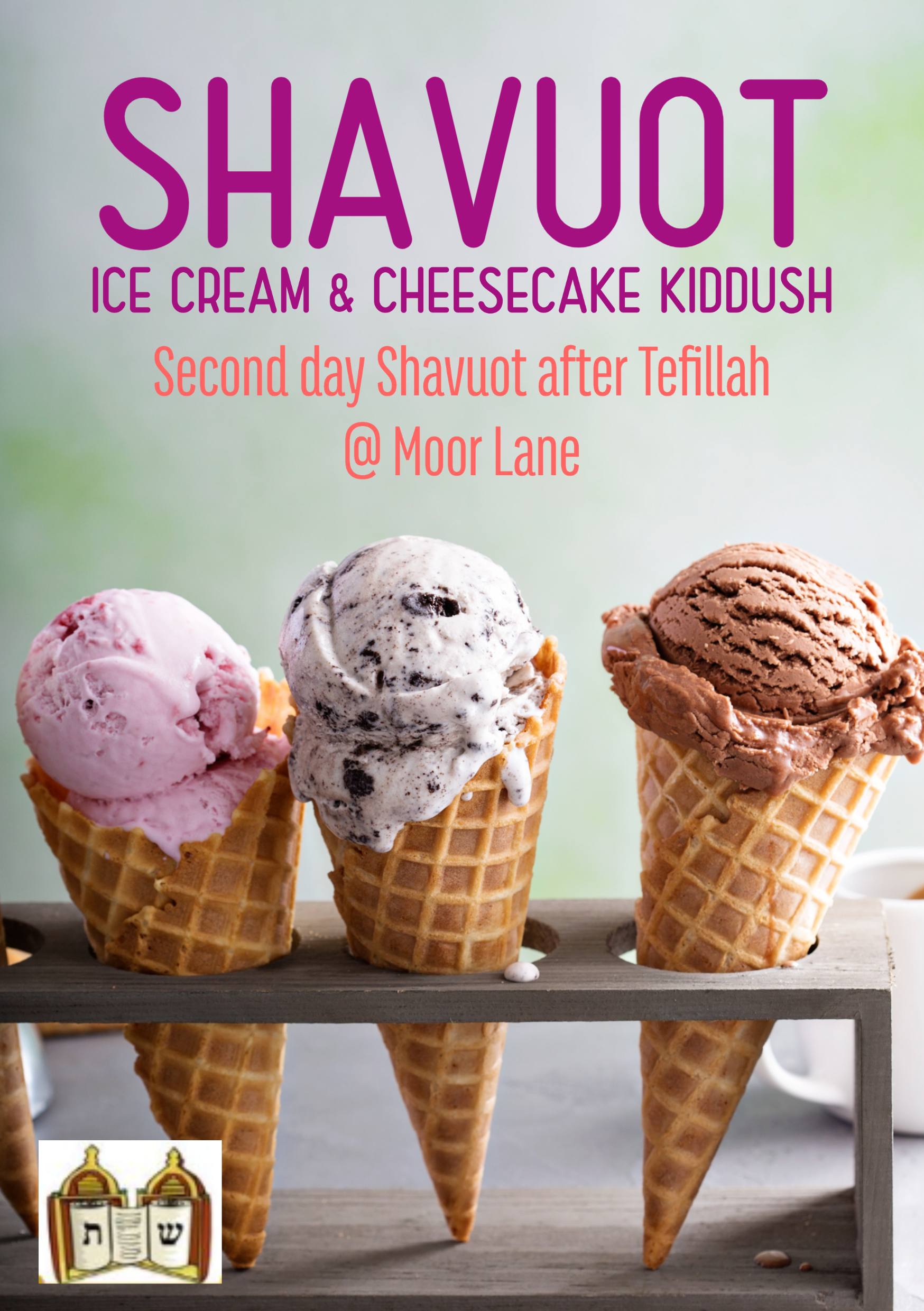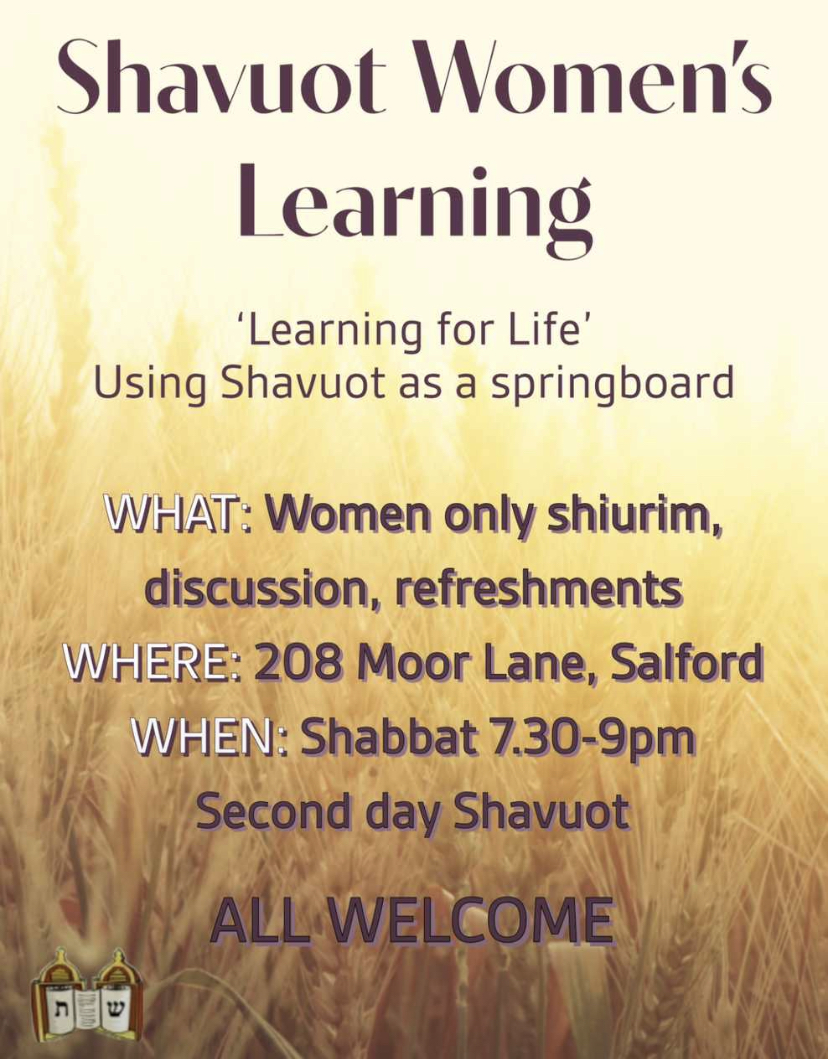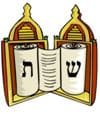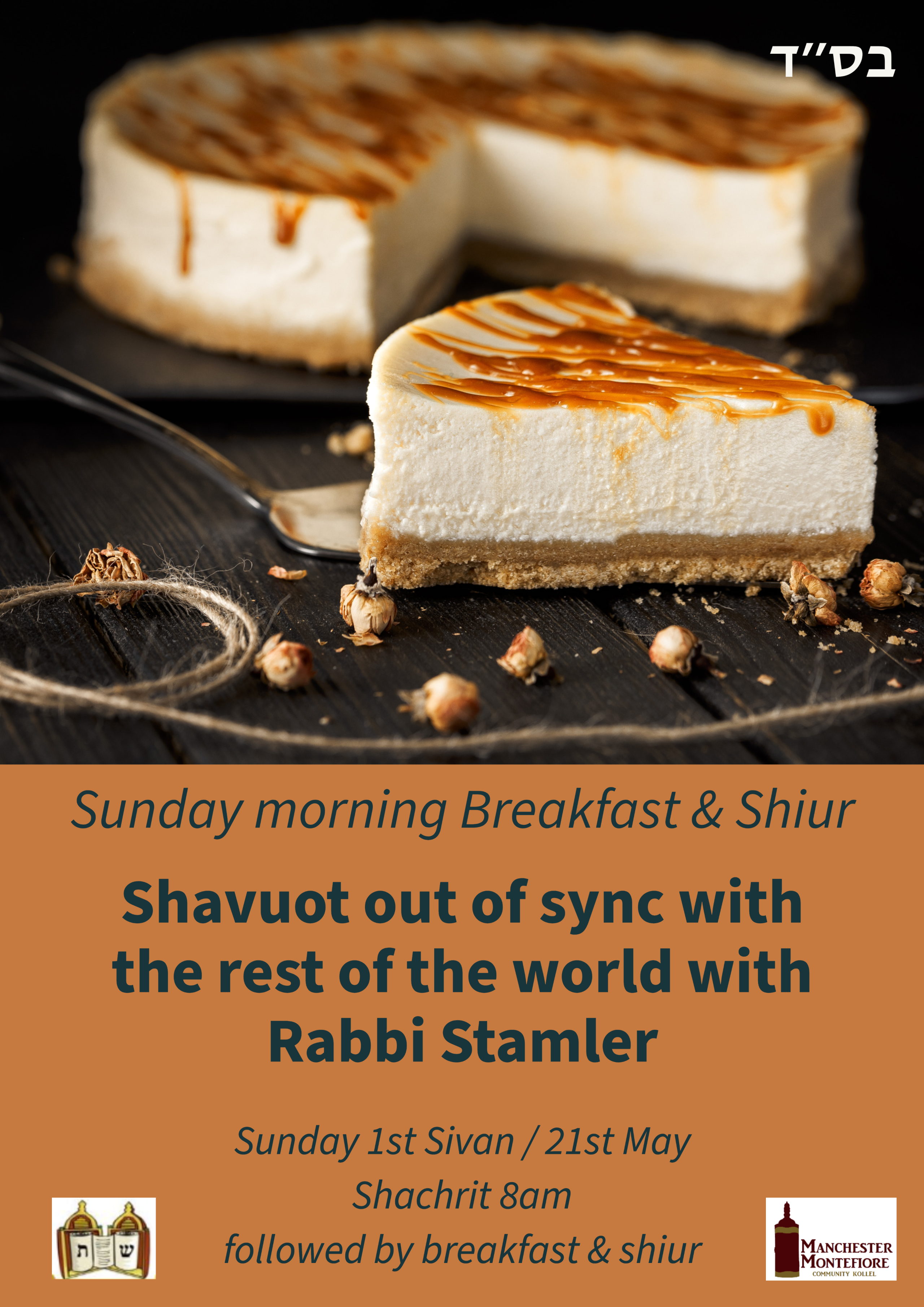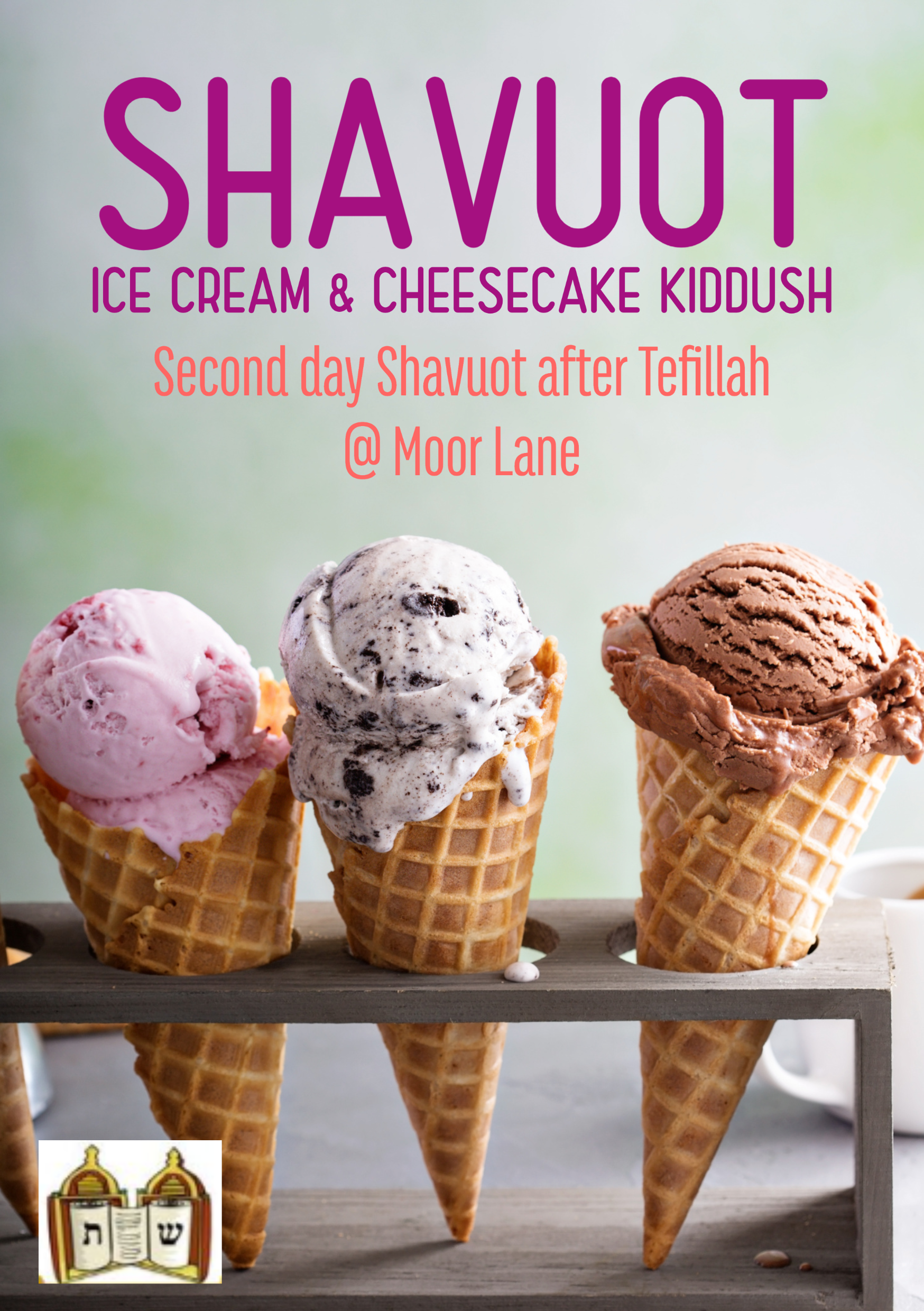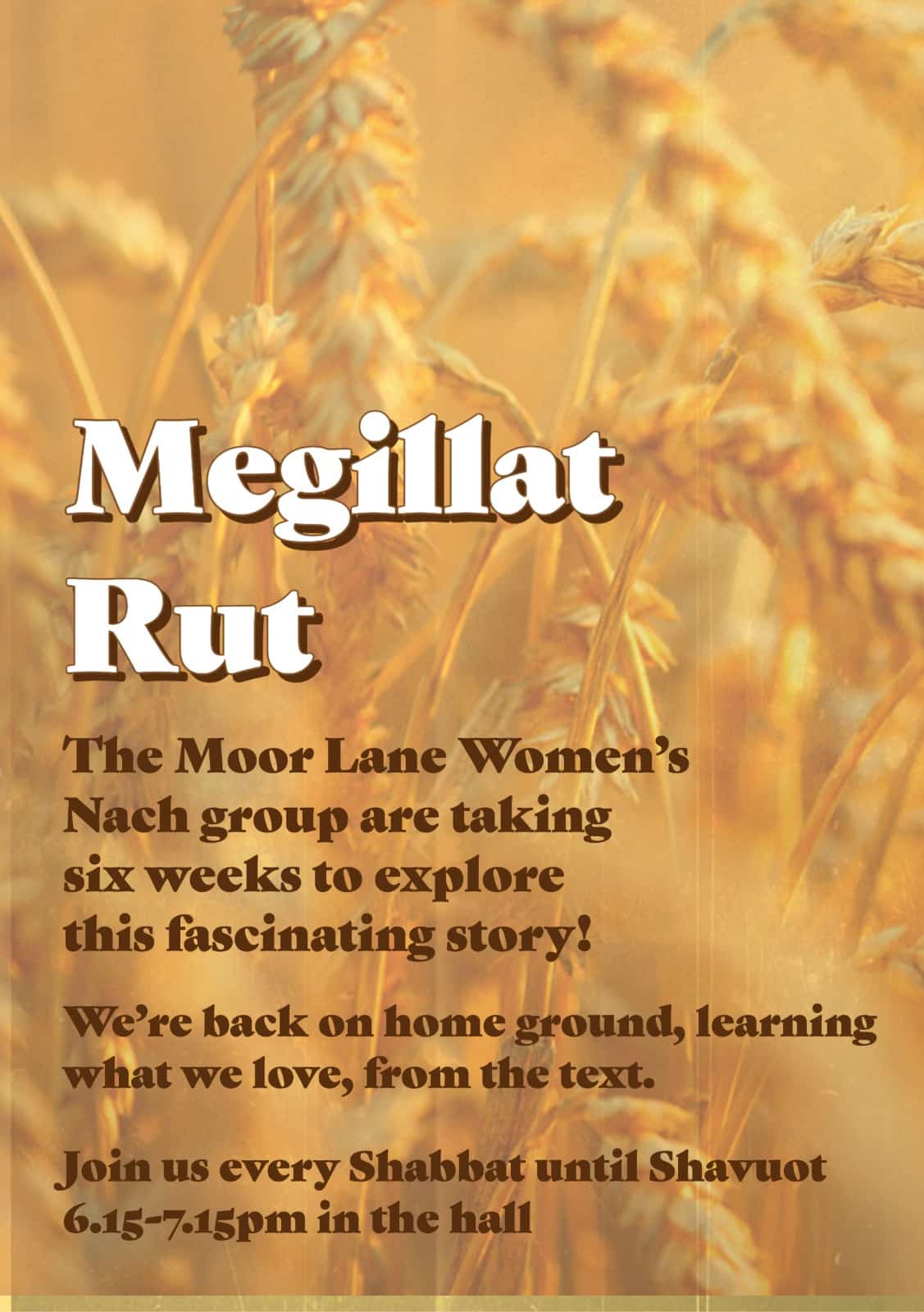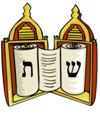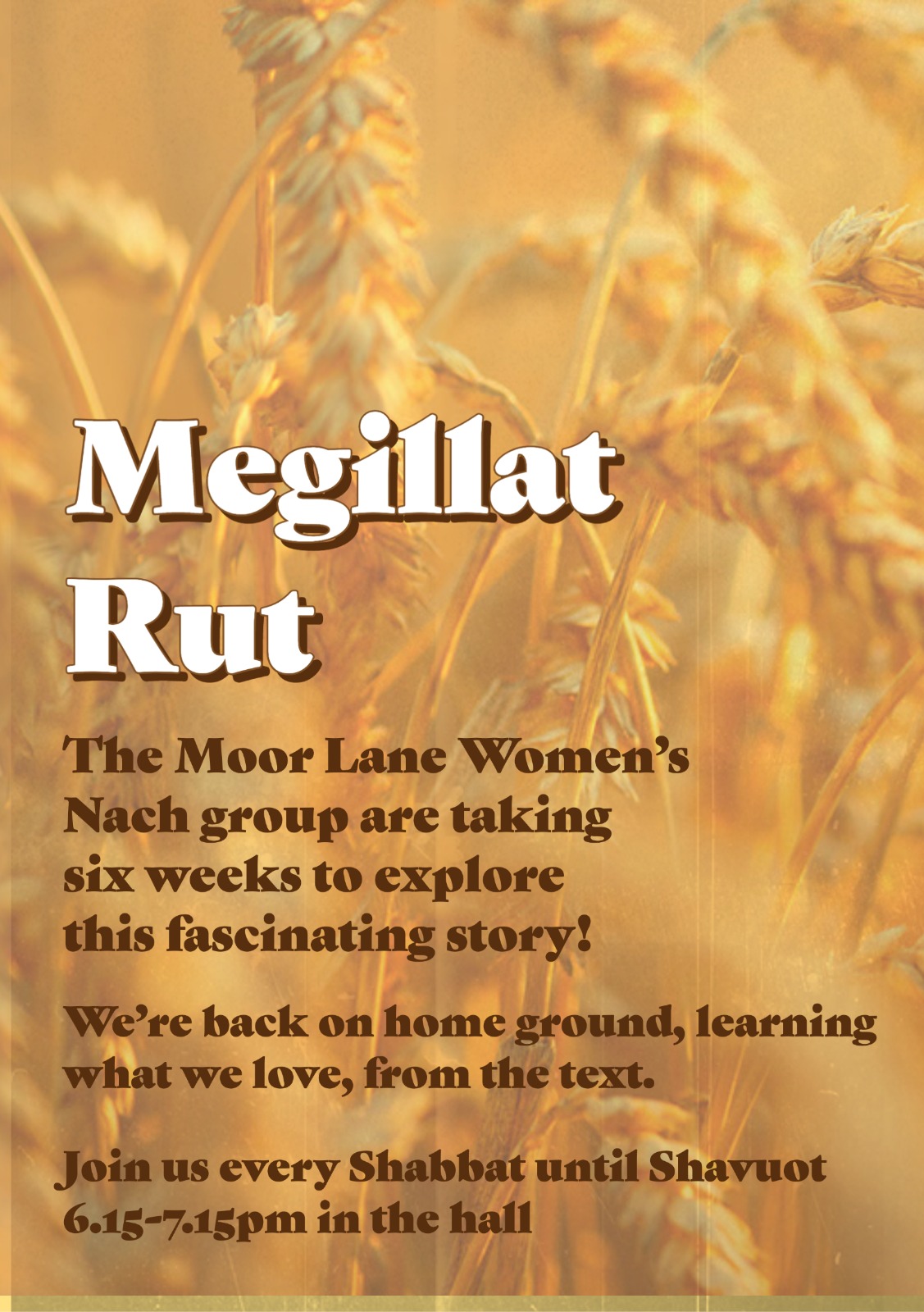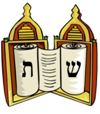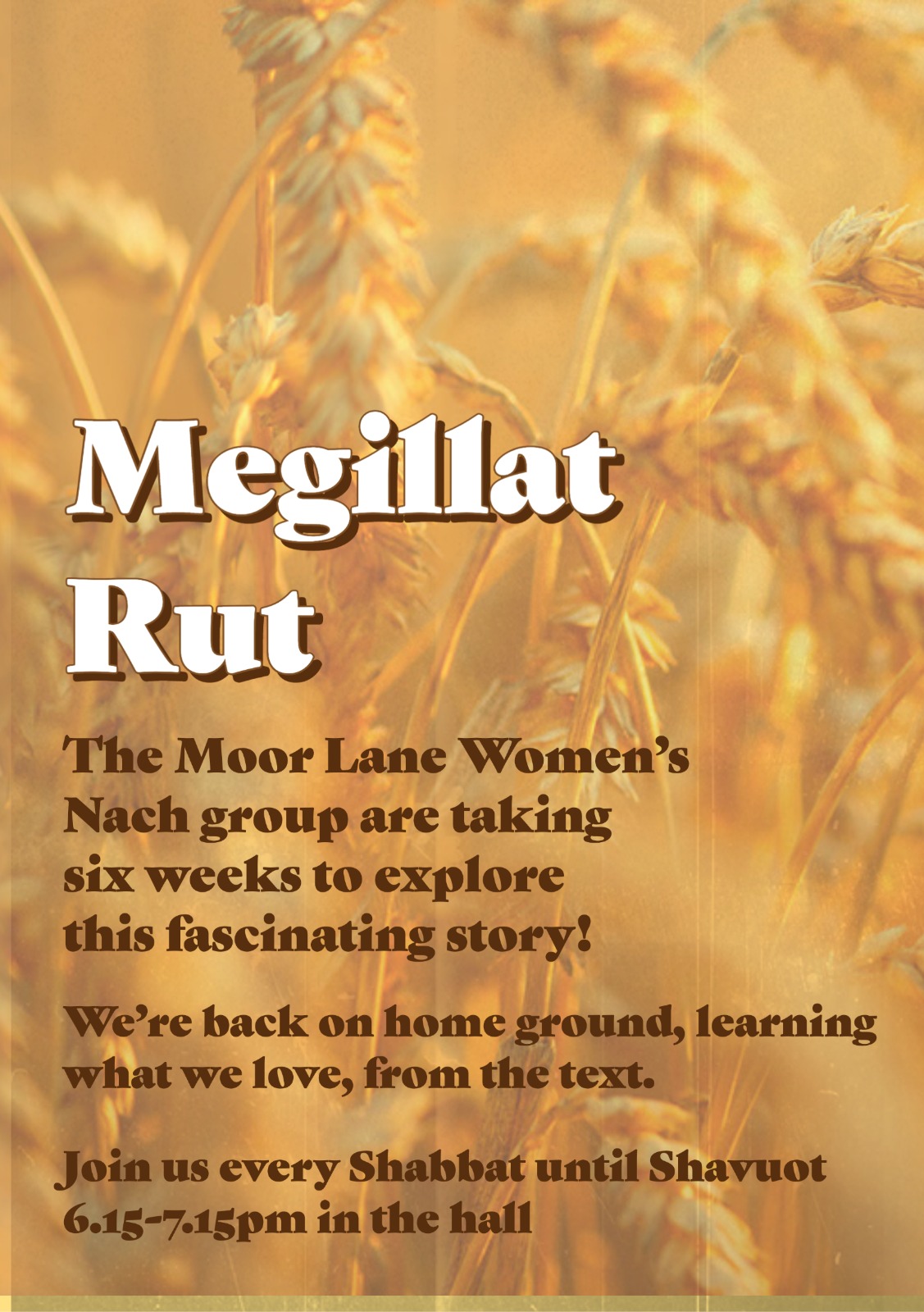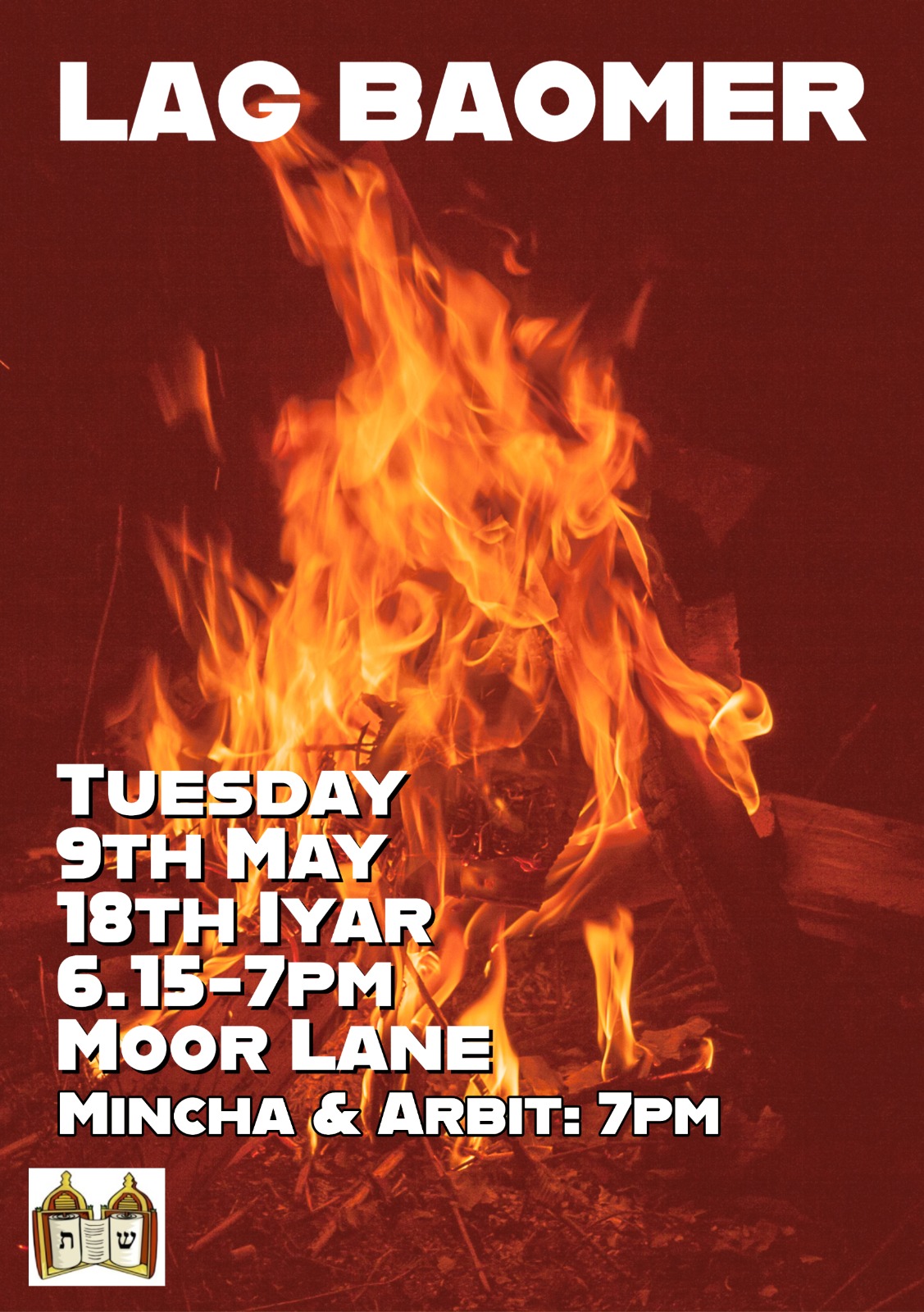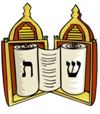
ק׳ ק׳ שׁערי תפילה

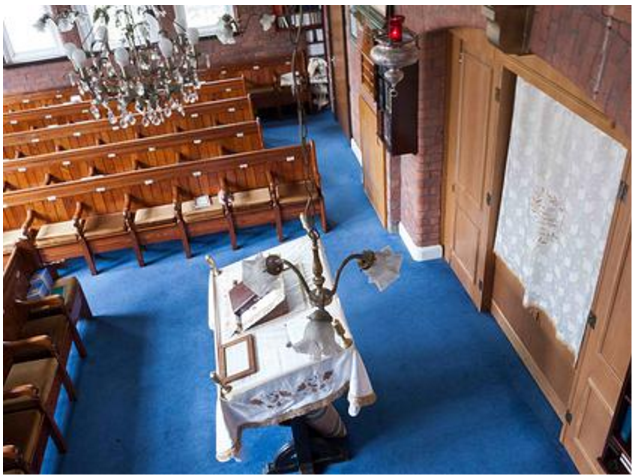
Pledge Reminder
All donations made after receiving an Aliya
during Shabout &/or previous Shabbatot
can be fulfilled in any of the following ways:
· By post addressed to
'The Treasurer, Manchester Congregation of Spanish and Portuguese Jews,
18 Moor Lane, Salford, Manchester M7 3WX'.
· By hand to the treasurer or any member of the Mahamad.
· Anonymously in the BLUE donations box in the Synagogue.
· Direct Debit to the shul's account for account details please speak directly to the treasurer
· Cheque payable to
'Manchester Congregation of Spanish & Portuguese Jews'.
Thank you & Tizke Lemitzvot

that we inform the
Kahal of the Petira of
Mrs Nanette Toft ע״ה
mother of our dear
Devorah & Naomi Toft
שתח״י ,
Wishing them a long and healthy life
מן השמים תנחמו
אריכות ימים
Moorlanenews
would like to use this opportunity
to send their heartfelt condolences
to
Mrs Devorah & Naomi Toft
שתח״י ,
and wish them
מן השמים תנחמו
אריכות ימים
לוח זמני תפלה לקיץ תשפ״ג
Summer Timetable 5783 – 2023
מוצאי שבת | ערבית )מוצ”ש( | סוף זמן קראת שמע | זמן שבת | פלג מנחה (תה״ד) | פלג מנחה (לבוש) | מנחה וקבלת שבת | תאריך | שבת פרשת |
Shabbat Ends | Arbit | Shema to be read before | Candles to be |
| Earliest Candle lighting | Minha & Kabbalat Shabbat* | Date | Parasha |
PM | PM | AM | PM | PM | PM | PM |
|
|
10:44 | 10:40 | 8:56 | 9:13 | 8:27 | 7:45 | 7:30 | 2/3 June | נשא |
For those not in the Bet Hakeneset, but wishing to bring in Shabbat with the Kahal, candles should be lit about 30 minutes after the time listed for Minha and Kabbalat Shabbat, unless the time listed in the ‘latest candle lighting’ column is earlier, when candles MUST be lit by that time, in all cases.



- What is the significance of the number 8,580 in this weeks Parsha?
4:47-48 – It is the number of leviim between ages thirty and fifty. - Besides transporting the Mishkan, what other service performed by the leviim is referred to in this Parsha?
4:47 – Singing and playing cymbals and harps to accompany the sacrifices. - On which day did Moshe teach the command to send those who are temeim (ritually impure) out of the camp?
5:2 – The day the Mishkan was erected. - Name the three camps in the desert.
5:2 – The camp of the Shechina was in the center, surrounded by the camp of Levi which was surrounded by the camp of Yisrael. - Who was sent out of each of the camps?
5:2 – A metzora was sent out of all three camps. A zav was permitted in the camp of Yisrael but excluded from the two inner camps. A person who was tamei from contact with the dead had to leave only the camp of the Shechina. - A person stole from another and swore that he was innocent. If he later confesses his guilt, what are his obligations?
5:6-8 – He pays the principle plus a fifth to the victim, and brings a korban asham. - Who determines which kohen receives the gifts that must be given to the kohanim?
5:10 – The giver. - What does the Torah promise a person who gives matnot kehuna?
5:10 – Great wealth. - Why are the verses about matnot kehuna followed by the verses about the sotah?
5:12 – To teach that someone who withholds the gifts due the kohanim is deserving of eventually bringing his wife to the kohanim to be tried as a sotah. - Why is the sotah given water from the holy basin?
5:17 – The holy basin was made from the mirrors of the righteous women who left Egypt; the sotah strayed from the example set by these women. - What does the kohen do to the hair of a sotah?
5:18 – He uncovers it. - When a sotah who is guilty of adultery drinks the water, she dies in a very specific fashion. What happens to the adulterer?
5:22 – He dies a similar death. - Before the name of G-d is erased, the sotah has the option either to admit guilt or to drink the water. Does she have a third option?
5:27 – Yes, she can refuse both: She can refuse to admit guilt and also refuse to drink the water. (After the Name of G-d is erased, she loses this option.) - What are chartzanim? What are zagim?
6:4 – Chartzanim are seeds. Zagim are peels. - What sin does a Nazir commit against himself?
6:11 – He abstains from enjoying wine. - Where was the cut hair of a Nazir placed?
6:18 – It was placed on the fire under the pot in which the nazirs shelamim offering was cooked. - A kohen should bless the people “with a full heart”. What word in the Parsha conveys this idea of “a full heart”?
6:23 – “Amor.” - What is the meaning of the blessing “May G-d bless you and guard you”?
6:24 – “May G-d bless you” that your property may increase, “and guard you” from robbery. - What is the meaning of the blessing “May G-d lift up His countenance upon you”?
6:26 – “May He suppress His anger.” - The tribe of Yissachar was the second tribe to offer their gifts. Why did they merit this position?
7:18 – The Tribe of Yissachar was well versed in Torah. Also, they proposed the idea that the nesiim should offer gifts.

הגשת מאכלים למי שאינו מברך
שאלה: האם מותר להגיש לפני אדם שאינו רגיל לברך על המזון, כיבוד, כגון עוגות ועוגיות וכדומה, או שיש בזה איסור מפני שבכך הוא נכשל באיסור אכילה בלא ברכה?
תשובה: בהלכה הקודמת ביארנו באופן כללי את עיקר הדין של “לפני עיור לא תתן מכשול”, שהכוונה בזה, שאסור לתת לפני שום אדם מכשול שיעבור על אחת ממצות התורה, כגון לתת לו מאכל איסור וכיוצא בזה.
ומעתה נבא לדון בעניננו, באדם שמחמת איזו סיבה מתארח בביתו יהודי שאינו שומר תורה ומצוות, והוא מעונין להגיש לפניו דבר מאכל, וידוע לו שאותו אדם לא יברך על המאכל, האם יש לחוש גם בנדון כזה לאיסור לפני עור לא תתן מכשול או לא?
ובגמרא במסכת חולין (דף קז:) אמרו, שאסור להאכיל פת למי שאינו נוטל את ידיו לפני האוכל, מפני איסור “לפני עור לא תתן מכשול”.
ונחלקו הפוסקים, האם אסור להגיש לחם דוקא למי שאין ספק בדבר שלא יטול את ידיו, או שהאיסור שייך גם במקרה שיש ספק אם האורח יטול את ידיו. ומדברי מרן השלחן ערוך משמע שגם במקרה שיש ספק אם האורח יטול את ידיו או לא, אסור להגיש לפניו לחם, מפני חשש איסור לפני עור לא תתן מכשול. (אולם המגן אברהם דייק להיפך מדברי מרן, שדוקא אם ודאי יעשה המתכבד איסור, אז אסור להגיש לפניו פת). ואם כן לכאורה הוא הדין לענינינו, במי שאינו רגיל לברך על האוכל, שיהיה אסור לתת לפניו כיבוד, מפני שמסתבר שלא יברך על האוכל, ונמצא שאנו מכשילים אותו באיסור אכילה בלא ברכה, ועל כל פנים יהיה בכך איסור במקום שבודאי אינו מברך על האוכל.
עוד עלינו להוסיף, כי אין להקל ראש בנדון שאלתינו כלל וכלל, מפני שהשאלה העומדת לפנינו, היא שאלה של איסור תורה ממש, שהרי איסור “לפני עור לא תתן מכשול” הוא איסור מן התורה. ואף על פי שאכילה בלא ברכה, לדעת רוב הפוסקים אין איסורה אלא מדרבנן, מכל מקום גם בהכשלת אדם באיסור דרבנן יש את האיסור של לפני עור לא תתן מכשול מן התורה, שהרי בנתינת מכשול כפשוטו בפני עור, כגון מי שמניח אבן להכשיל את העור שיפול בהליכתו, בודאי שיש איסור תורה, ואם כן, בהכשלה באיסור דרבנן, שגורמת לאדם לקבל עונש בידי שמים, שהוא דבר חמור יותר ממעידה ונפילה בעולם הזה, כל שכן שנחשב הדבר למכשול מן התורה. (ואמנם יש הרבה מה להאריך בענין זה, ובשו”ת תורת חסד להגאון מלובלין האריך לדון בנדון זה, אם המכשיל את חבירו באיסור דרבנן עובר על איסור תורה של לפני עור, או שאינו אסור אלא מדרבנן, אבל מכל מקום עדיין יש כאן שאלה הנוגעת לאיסור תורה), ועל כן קשה מאד לסמוך על סברות בלתי מוכרחות להתיר נתינת כיבוד בפני מי שאינו מברך.
ומעשה שהיה לפני למעלה מחמישים שנה, שנשאל בנדון שלנו הגאון בעל ה”חזון איש”, והשיב לשואל (הוא הרב מגיד המישרים הגאון רבי שלום מרדכי הכהן שבדרון ז”ל), שלדעתו יש להתיר נתינת כיבוד בפני אורח שאינו מברך, וטעמו להקל בזה היה, הואיל ואין האיסור בנתינת מכשול, אלא מחמת המכשול שיהיה בפועל לאותו שיכשל, ואם כן, הואיל ואם לא נגיש בפני האורח מאכל ומשקה בודאי הוא יפגע מכך, ועל ידי זה יכשל באיסור חמור של שנאת ישראל, שבודאי הוא חמור יותר מאיסור אכילה בלא ברכה, לפיכך יש להתיר להגיש כיבוד בפני יהודי באופן זה.
אולם הגאון רבי שלמה זלמן אוירבך ז”ל, בספרו שו”ת מנחת שלמה (ח”א), לא כתב להקל בזה, אלא דוקא בנדון שהאורח היה תומך תורה גדול, וגם יש חשש חילול ה', שיאמרו שהדתיים אינם מתנהגים בדרך ארץ, אבל בלא דוחק גדול כזה לא כתב להתיר.
ולמעשה, השיבנו מרן רבינו הגדול רבי עובדיה יוסף זצ”ל, כי נכון להמנע מלהגיע בכלל למצבים כגון אלו, ואם אירע שהגיע אורח שאינו שומר תורה ואינו מברך, ויש חשש חילול ה' אם לא יגישו לפניו כיבוד, אז נכון מאד לבקש ממנו בדרך ארץ גדולה שיברך על מה שאוכל, ואם אי אפשר לבקשו לברך, או שקרוב לודאי שהוא יסרב, אז יש מקום בדוחק גדול להתיר להגיש לפניו כיבוד. ועל כל פנים כאמור, לדעת החזון איש יש להקל בנדון זה.
ויש עוד עצה בענין זה שלעתים קרובות היא אפשרית, שיגיש בפני האורח כיבוד, ואז יטול בעצמו גם כן מהכיבוד, ויאמר לאורח, אני מברך ומכוין להוציא אותך ידי חובה, ותענה אמן, ואז יברך ויפתור בברכה גם את האורח, וגם יזכה אותו בברכה.
Serving Food to an Individual Who Does Not Recite Blessings
Question: May one serve refreshments, such as cake and cookies, to an individual who does not usually recite blessing before eating or is this forbidden since the individual is now transgressing the prohibition of eating without a blessing as a result?
Answer: In the previous Halacha, we have explained the general laws of the prohibition of “Do not place a stumbling-block before a blind man,” which refers to placing an opportunity before any person to transgress any of the Mitzvot of the Torah, for instance, by giving him something forbidden to eat.
Regarding our discussion, when one hosts a Jew who is not Torah and Mitzvot observant and would like to serve his guest food and drink, must one be concerned here of the prohibition of “placing a stumbling-block before a blind man” or not?
The Gemara in Masechet Chullin (107b) states that one may not serve bread to one who does not wash his hands before eating a bread meal, for this constitutes the prohibition of “placing a stumbling-block before a blind man.”
The Poskim disagree, however, if this is true even when it is uncertain if the individual will transgress the sin or does the prohibition only apply when there is no doubt that he will transgress the sin as only this is considered “placing a stumbling-block.” We can infer from the words of Maran Ha’Shulchan Aruch that as long as we are not completely certain that the guest will in fact wash his hands, he should not be served bread because of the concern of “placing a stumbling-block.” (The Magen Avraham, on the other hand, implies from Maran that only if the guest will certainly sin may the host not serve him bread.) If so, it would seem that the same should apply to our scenario regarding one who does not usually recite a blessing on his food before eating and it will be forbidden to serve him refreshments since chances are that he will eat without reciting a blessing and ultimately, we are causing him to transgress the prohibition of eating without reciting a blessing. It should at least be forbidden to serve him when he will surely not recite a blessing before eating.
We should add that one should not take this law lightly at all, for it seems at face value that in our case there is a concern for transgressing Torah law, for “placing a stumbling-block” is a Torah prohibition. Although eating without reciting a blessing is a rabbinic prohibition according to most Poskim, it seems that the prohibition of “placing a stumbling-block” still applies on a Torah level even when causing one to transgress a rabbinic law, for if one places an actual stumbling-block, such as a stone, in front of a blind man in order to trip him, he surely transgresses a Torah prohibition. Similarly, if one causes another to transgress a rabbinic prohibition for which the individual will be punished by Heaven for transgressing this law, which is much more severe than merely tripping and falling in this world, one should surely transgress this Torah prohibition. Indeed, the author of the Responsa Torat Chesed (Lublin) discusses the issue of whether one who causes another to transgress a rabbinic prohibition is liable by Torah or rabbinic law for transgressing the prohibition of “placing a stumbling-block.” In any event, since this is an issue that borders on Torah prohibitions, it is difficult to permit serving food to one who will not recite a blessing on the basis of such unproven reasoning.
Indeed, Hagaon Chazon Ish zt”l was asked this question over fifty years ago by the famed Maggid, Hagaon Harav Shalom Shwadron zt”l and he replied that in his opinion, serving food to a guest who will not recite a blessing is permissible because the prohibition of “placing a stumbling-block” only applies when it is actually an obstacle that the other party will transgress. Thus, if the guest is not served refreshments, he will surely be insulted and that will cause him to transgress the negative commandment of hating another Jew which is certainly worse that the prohibition of eating without reciting a blessing. It is therefore permissible to serve refreshments to such a Jew.
Nevertheless, Hagaon Harav Shlomo Zalman Auerbach zt”l rules leniently on this matter in his Responsa Minchat Shlomo (Volume 1) only when the guest is a steady financial supporter of Torah in which case a desecration of Hashem’s name may result by the guest falsely believing that religious Jews are not well-mannered. However, when this is not the case, he does not rule leniently.
Halachically speaking, Maran Rabbeinu Ovadia Yosef zt”l replied to this question and said that it is proper to avoid such situations altogether. However, if a non-Torah-observant guest who will not recite a blessing arrives at one’s home and if he is not served refreshments, a desecration of Hashem’s name will result, it is nevertheless proper to ask him very politely to recite a blessing on what he eats. If it is impossible to ask him to recite a blessing or it is almost certain that he will refuse to do so, there is room for leniency (barely) since there is no other recourse. As we have mentioned though, there is room for leniency according to the Chazon Ish in any event.
Another idea for when situations like these arise is that when the refreshments are being served, the host himself should partake of the food and tell the guest, “I will recite a blessing and I am having you in mind, so please just answer Amen.” In this way, one will fulfill one’s obligation according to all opinions.
